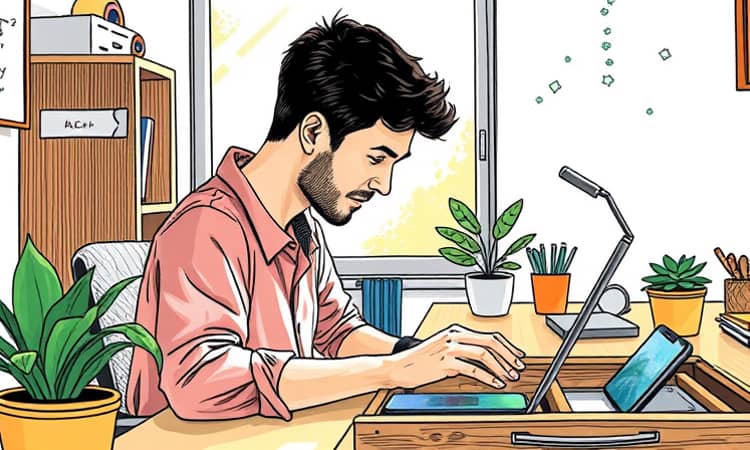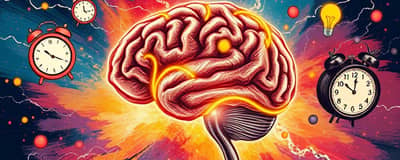In our era of endless notifications and buzzing devices, finding true concentration can feel like chasing a mirage. Studies show that digital distractions account for a significant portion of lost focus at work and home, often through non-urgent alerts that incessantly interrupt our flow. Yet, focus is not a fixed trait—it is a skill that can be nurtured, refined, and harnessed for deeper productivity and creativity.
By embracing intentional habits, evidence-based strategies, and supportive environments, anyone can build the mental resilience to resist distractions and maintain sustained attention. Whether you’re a remote worker juggling video calls or a student facing environmental noise, this article offers a comprehensive roadmap to reclaim your concentration and unlock your true potential.
Why Focus Matters
At its core, focus is the gateway to high-quality work, innovative thinking, and reduced stress. When we juggle multiple inputs—emails, messages, social feeds—our brains incur a measurable cost. Harvard Business Review reports that cognitive capacity increases notably when smartphones are out of sight, even without powering them off. Furthermore, UC Berkeley’s Becoming Superhuman Lab found that teams practicing Focus Sprints scheduled uninterrupted work periods enjoyed a 43% productivity boost.
Conversely, multitasking and frequent interruptions lead to poorer performance, elevated burnout risk, and diminished creativity. Cultivating sustained attention not only enhances output but also fosters a sense of flow, satisfaction, and well-being.
Understanding Your Distractions
- Digital: Phone notifications, email alerts, social media feeds, instant messaging apps.
- Environmental: Ambient noise, visual clutter, uncomfortable lighting or temperature.
- Internal: Mental fatigue, hunger, stress, lack of sleep or hydration.
Each distraction type undermines focus in a distinct way: digital interruptions fragment attention, environmental disturbances trigger reactive shifts, and internal stressors sap mental energy. Recognizing and categorizing what pulls you away is the first step toward targeted solutions.
Eliminating Digital Interruptions
- Turn off non-essential notifications on phones and computers.
- Use app blockers to restrict access to distracting websites.
- Adopt a one screen at a time rule to prevent multitasking across devices.
- Log out of social media accounts when not in active use.
By removing the constant ping of incoming alerts, you create extended windows for deep work. Consider dedicating a drawer or separate room for your smartphone during intense focus sessions. Out of sight often means out of mind, allowing your cognitive resources to remain fully engaged with the task at hand.
Structuring Your Time and Tasks
Effective time management amplifies your ability to concentrate. Techniques such as time blocking and the Pomodoro Technique can transform overwhelming days into organized, purpose-driven schedules. With time blocking, allocate specific intervals on your calendar for high-priority work and communicate those windows as “do not disturb” sessions to colleagues or family members.
The Pomodoro Technique—25 minutes of focused effort followed by a 5-minute break—reinforces sustained attention while preventing mental fatigue. At the end of each workday, identify the two most critical tasks for tomorrow. By tackling these tasks first thing, you harness your freshest energy and avoid the lure of shallow activities like email checking or social browsing.
Setting clear objectives reduces decision fatigue and carves out mental space for what truly matters. Prioritize urgent or high-impact projects before moving on to routine chores, and celebrate small victories to maintain momentum.
Optimizing Your Environment and Wellbeing
- Adjust lighting, temperature, and seating for maximum comfort.
- Declutter your workspace to minimize visual distractions.
- Incorporate plants or natural elements to improve air quality and mood.
- Fuel your focus with balanced meals, hydration, and regular breaks.
Your physical surroundings directly influence mental clarity. A clean, well-lit workstation supports concentration, while ergonomic furniture prevents discomfort-related interruptions. Additionally, adequate sleep and nutrition sustain energy levels throughout the day. Research indicates that adequate sleep boosts cognitive function and fortifies your ability to resist distractions.
Integrate short movement breaks—a brief walk or stretching—to reset your attention and reduce stress. Mindfulness exercises or meditation sessions can further strengthen your capacity for sustained focus, fostering a growth mindset training sustained attention over time.
Overcoming Common Challenges
Despite the best plans, obstacles will arise. The expectation of constant availability, fear of missing out (FOMO), and information overload pose significant threats. To counteract these pressures, establish clear boundaries with colleagues and family. Set technology-free periods each day to recharge without digital intrusions.
Teams can adopt shared norms—like designated “focus sprints” and visible status indicators—to balance collaboration needs with undisturbed work. Encourage open dialogue about concentration requirements and rotate focus roles to ensure collective discipline. Remember, protects deep, undistracted work time benefits both individual productivity and team creativity.
Conclusion
Mastering focus in a world brimming with distractions is a journey, not a one-time feat. By implementing these practical strategies—eliminating unnecessary interruptions, structuring your time, optimizing your environment, and nurturing your wellbeing—you can steadily build the mental muscle needed for deep, meaningful work.
Embrace the challenge, start with small, consistent changes, and celebrate each incremental improvement. Your capacity for concentration will grow, unlocking new levels of creativity, efficiency, and fulfillment. With intentional practice, you can transform distraction-prone habits into a foundation for exceptional focus and lasting success.
References
- https://positivepsychology.com/how-to-focus/
- https://www.betterup.com/blog/15-ways-to-improve-your-focus-and-concentration-skills
- https://hallmark.edu/student-tips-reducing-distractions-at-home/
- https://hbr.org/2025/02/7-habits-to-stay-focused-in-a-world-full-of-distractions
- https://www.drmichellerozen.com/time-management/struggling-to-stay-focused/
- https://www.americanexpress.com/en-us/business/trends-and-insights/articles/increase-your-focus-reduce-distractions-tips/
- https://asana.com/resources/stay-focused
- https://www.helpingwritersbecomeauthors.com/creativity-vs-distraction-finding-empowerment-as-a-writer-in-the-age-of-the-internet/














